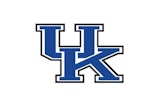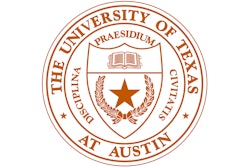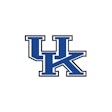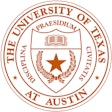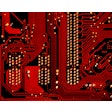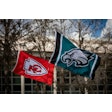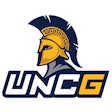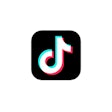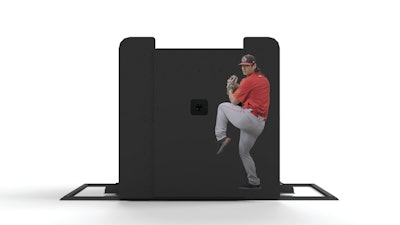
The first pitching machine was developed in 1897 by mathematics professor Charles Hinton for the Princeton University baseball team. It was powered by gunpowder, could throw pitches at variable speeds, and reportedly caused several injuries — which ultimately led to Hinton’s dismissal from Princeton.
Fast forward 125 years and the technology has been refined considerably (and thankfully no longer runs on gunpowder). Today’s coaches use pitching machines as a way of simulating the speed and movement of pitches thrown during games without wearing out the arms of their staff pitchers during batting practice. The machines are also used at the youth and college levels to help batters learn how to hit certain pitches — curveballs, sliders, cutters. That said, while available machines can simulate specific pitches, until now they’ve been unable to give batters a feel for a given pitcher’s unique delivery. This is especially true at the professional level, where a curveball thrown by the Los Angeles Dodgers’ Clayton Kershaw differs dramatically — both in the movement of the ball and the delivery of the pitch — from one thrown by the St. Louis Cardinals’ Adam Wainwright.
As is true with most sports technology, innovation starts at the top and trickles down to the lower levels, which is exactly what’s happening with pitching machines due to the work of a new company that is employing boatloads of pitching data and some high-tech hardware to reproduce with extreme accuracy — right down to the ball’s spin rate — just about any pitch ever thrown in a major league game.
Joshua Pope, co-founder of Trajekt Sports — a startup that aims to revolutionize the pitching machine — says that it was the sheer amount of data being collected on today’s pitchers that made him think it would be possible to reproduce some of the nastiest stuff being thrown in the big leagues today.
“What I had noticed is that the MLB since 2014 — through Statcast and TrackMan — was tracking every single pitch ever thrown in games,” says Pope. “But there was no way to manifest this data to something physical that can be used for training. The data was being collected and used for pitch design and helping pitchers improve. But there’s no way to make the same data useful for batters and for batting practice.”
Trajekt’s aim was to leverage all the existing data to build a machine that could replicate the entire game experience for a batter — “all the way from the release characteristics of the ball to the whole visual-stimulus context of what the batter sees,” as Pope describes it.
Pope and his co-founder hit the strike zone, eventually perfecting a machine that could not only break a pitch down and replicate it, but also recreate the deliveries of specific pitchers through a video projection component.

“The existing machines can only do velocity, and two dimensions of spin — backspin and sidespin,” explains Pope. “We knew that there was a lot of work to be done to get the remaining seven degrees of freedom. And then we actually stopped one short of all 12. We don’t control the release extension. That’s how far away from the mound you are. But we control the ball’s orientation, spin axis and velocity, and the position in terms of the release position: left, right, up and down. But not away from or toward home plate.”
Aside from being able to accurately reproduce pitches, the Trajekt system uses a projector that sits 20 feet away from the machine. The projector is connected through HDMI to the machine’s control cabinet. A big challenge in perfecting this part of the system was ensuring that the video of the pitcher’s delivery synced seamlessly with the release of the ball.
“If you’re 10 milliseconds off between the frame of release and when the ball actually leaves the machine, batters will know something doesn’t feel right,” Pope says.
Once that problem was fixed, Trajekt garnered interest from MLB teams, and has since installed machines in seven major league stadiums. He says the units are currently being used for practice and to allow batters to warm up with virtual versions of the opposing pitchers they’ll face in the upcoming game.
Pope admits that the cost to own a Trajekt machine is currently prohibitive for youth leagues and even most college programs, but he says the company is looking at a less-expensive scaled-down version for those applications. “We’re taking the learning that we get from what are the core feature additions that our machine has, and we’re trying to figure out how we can make a cheaper, less-complex machine that could be used by high school and college teams.”














